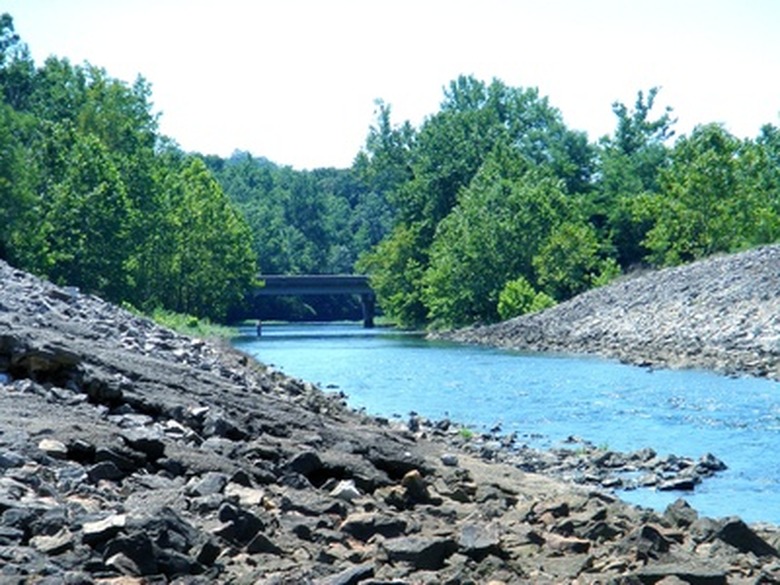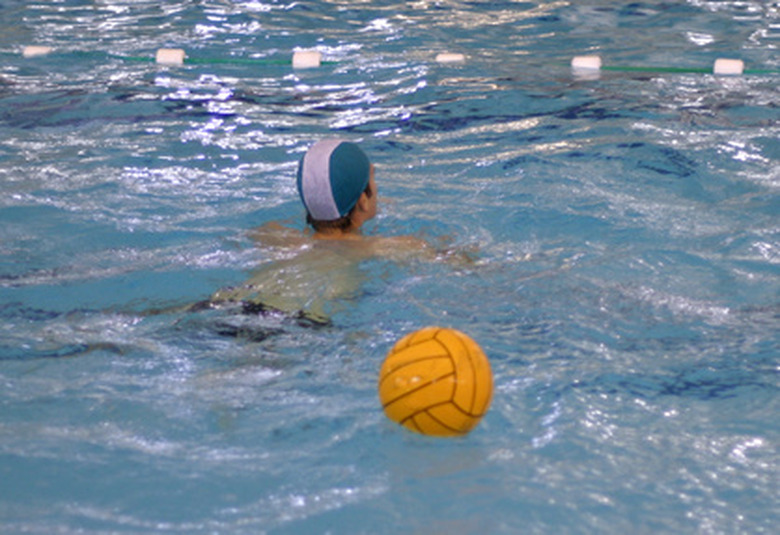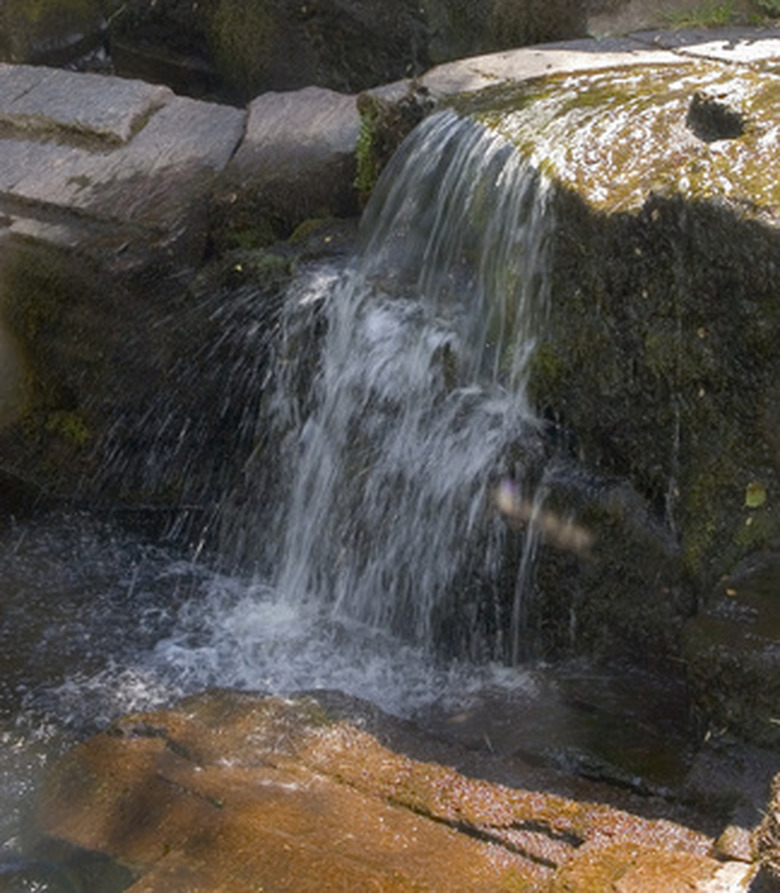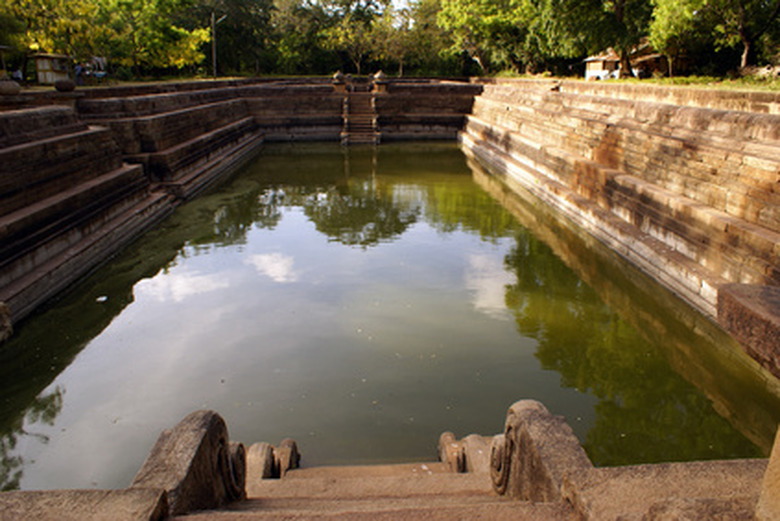The Effects Of Chlorine On Water Conductivity
Conductivity is a way to quantify the capacity of water to transmit an electrical current. The presence of inorganic suspended solids such as chloride, nitrate, phosphate, and sulfate ions (ions that carry a negative charge) or aluminum, calcium, magnesium, iron, and sodium ions (ions that carry a positive charge) have an effect on water conductivity. Conductivity is affected by temperature because water flows more readily and ions can move with less effort at higher temperatures. Typically, 25 degrees C is the reference for conductivity measurements.
Chlorine
Chlorine is an element and a powerful oxidizing agent. Chlorine by itself as Cl2 is extremely toxic, and it is frequently used as a disinfectant. When dissolved in water at roughly a pH of 7, it forms hypochlorite ions, which is the active constituent in bleach. The total dissolved solids make up about 70 percent of the conductivity measured in units of siemens/cm (S/cm). This measurement represents the conductance of 1 siemen of dissolved ions over a distance of 1 cm.
Chlorine in Nature
Sodium chloride has been recognized as the most well-known compound of chlorine since antiquity. The chloride ion, a constituent of salt that is dissolved in the oceans or built up in the earth, is how chlorine is found in nature. Chloride ions are approximately 1.9 percent of the mass of seawater. The more chloride ions present in the water, the higher the conductivity. In general, the conductivity of waterways in the United States varies from 50 to 1500 µmhos/cm, and inland freshwater lake studies reveal a conductivity of 150 to 500 µmhos/cm.
Effect of Chlorine on Water Conductivity
In order to provide tap water, the water is drawn from a lake or river and passes through a treatment procedure. A small quantity of chlorine is put in to kill microbes before the water is sent via pipes to faucets in the vicinity. When chlorine is introduced into the water, the quantity of electrolytes or total dissolved solids in the water rises, which in turn raises the conductivity of the water. High-conductivity tap water includes various substances such as chlorine that diminish the taste of the water. As individuals try to purify water by gradually eliminating inorganic ions, the water conductivity steadily drops.
Cite This Article
MLA
Lorday, Kayla. "The Effects Of Chlorine On Water Conductivity" sciencing.com, https://www.sciencing.com/effects-chlorine-water-conductivity-6661358/. 24 April 2017.
APA
Lorday, Kayla. (2017, April 24). The Effects Of Chlorine On Water Conductivity. sciencing.com. Retrieved from https://www.sciencing.com/effects-chlorine-water-conductivity-6661358/
Chicago
Lorday, Kayla. The Effects Of Chlorine On Water Conductivity last modified March 24, 2022. https://www.sciencing.com/effects-chlorine-water-conductivity-6661358/



